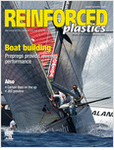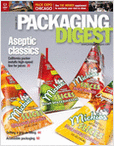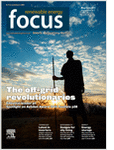Plastic Types, Characteristics and ... Dangers!!!
Tuesday, June 30, 2009
Individuals have a way to identify the type of plastic in many products, especially food storage containers and packaging [Check out the video below... interesting]. Many, but not all, such plastic products have a number – the resin identification code – molded, formed or imprinted in or on the container, often on the bottom. This system of coding was developed in 1988 by the U.S. - based Society of the Plastics Industry to facilitate the recycling of post-consumer plastics. It is voluntary for plastic manufacturers, but has become relatively standard on certain plastic products sold globally. Knowing the code for a particular product, consumers can then inform themselves of the characteristics of the plastic and the risks of using that product.
The seven plastic resin codes are each briefly described below to provide a quick snapshot detailing the name of the resin (i.e., the base material of the plastic), typical products it is found in, dangerous chemicals it leaches, and why they are dangerous.Polyethylene terephthalate (PET or PETE) – Used in soft drink, juice, water, beer, mouthwash, peanut butter, salad dressing, detergent and cleaner containers. Leaches antimony trioxide and di(2ethylhexyl) pthalate (DEHP). Workers exposed to antimony
 trioxide for long periods of time have exhibited respiratory and skin irritation; among female workers, increased incidence of menstrual problems and miscarriage; their children exhibited slower development in the first twelve months of life. The longer a liquid is left in such a container the greater the concentration of antimony released into the liquid. DEHP is an endocrine disruptor that mimics the female hormone estrogen. It has been strongly linked to asthma and allergies in children. It may cause certain types of cancer, and it has been linked to negative effects on the liver, kidney, spleen, bone formation and body weight. In Europe, DEHP has been banned since 1999 from use in plastic toys for children under the age of three.
trioxide for long periods of time have exhibited respiratory and skin irritation; among female workers, increased incidence of menstrual problems and miscarriage; their children exhibited slower development in the first twelve months of life. The longer a liquid is left in such a container the greater the concentration of antimony released into the liquid. DEHP is an endocrine disruptor that mimics the female hormone estrogen. It has been strongly linked to asthma and allergies in children. It may cause certain types of cancer, and it has been linked to negative effects on the liver, kidney, spleen, bone formation and body weight. In Europe, DEHP has been banned since 1999 from use in plastic toys for children under the age of three.
Check out the video below to learn how plastic bottles are made from Polyethylene terephthalate - interesting stuff!!!

 bottles, cooking oil and peanut butter jars, detergent and window cleaner bottles, shower curtains, medical tubing, and numerous construction products (e.g., pipes, siding). PVC has been described as one of the most hazardous consumer products ever created. Leaches di(2-ethylhexyl) phthalate (DEHP) or butyl benzyl phthalate (BBzP), depending on which is used as the plasticizer or softener (usually DEHP). DEHP and BBzP are endocrine disruptors mimicking the female hormone estrogen; have been strongly linked to asthma and allergic symptoms in children; may cause certain types of cancer; linked to negative effects on the liver, kidney, spleen, bone formation and body weight. In Europe, DEHP and BBzP and other dangerous pthalates have been banned from use in plastic toys for children under three since 1999. Not so elsewhere, including Canada and the United States.
bottles, cooking oil and peanut butter jars, detergent and window cleaner bottles, shower curtains, medical tubing, and numerous construction products (e.g., pipes, siding). PVC has been described as one of the most hazardous consumer products ever created. Leaches di(2-ethylhexyl) phthalate (DEHP) or butyl benzyl phthalate (BBzP), depending on which is used as the plasticizer or softener (usually DEHP). DEHP and BBzP are endocrine disruptors mimicking the female hormone estrogen; have been strongly linked to asthma and allergic symptoms in children; may cause certain types of cancer; linked to negative effects on the liver, kidney, spleen, bone formation and body weight. In Europe, DEHP and BBzP and other dangerous pthalates have been banned from use in plastic toys for children under three since 1999. Not so elsewhere, including Canada and the United States.



 Important Note : Two other types of plastic that fall under code 7 are acrylonitrile styrene (AS) or styrene acrylonitrile (SAN), and acrylonitrile butadiene styrene (ABS). Both AS/SAN and ABS are higher quality plastics with increased strength, rigidity, toughness and temperature and chemical resistance. AS/SAN is used in mixing bowls, thermos casing, dishes, cutlery, coffee filters, toothbrushes, outer covers (printers, calculators, lamps), battery housing. The incorporation of butadiene during the manufacture of AS/SAN, produces ABS,
Important Note : Two other types of plastic that fall under code 7 are acrylonitrile styrene (AS) or styrene acrylonitrile (SAN), and acrylonitrile butadiene styrene (ABS). Both AS/SAN and ABS are higher quality plastics with increased strength, rigidity, toughness and temperature and chemical resistance. AS/SAN is used in mixing bowls, thermos casing, dishes, cutlery, coffee filters, toothbrushes, outer covers (printers, calculators, lamps), battery housing. The incorporation of butadiene during the manufacture of AS/SAN, produces ABS,  which is an even tougher plastic. ABS is used in LEGO toys, pipes, golf club heads, automotive parts, protective head gear. Our research on risks associated with AS/SAN and ABS is ongoing.
which is an even tougher plastic. ABS is used in LEGO toys, pipes, golf club heads, automotive parts, protective head gear. Our research on risks associated with AS/SAN and ABS is ongoing.WHAT THIS MEANS FOR YOUR EVERYDAY PLASTIC USE : You may wish to seriously consider your – and especially your children's – use of plastics numbered 1, 3, 6 and 7 (polycarbonate), all of which have been shown to leach dangerous chemicals. This does not necessarily mean the others are completely safe, just that they have been studied less to date.

So if you have to use plastic, it is safest to stick to numbers 2, 4, 5 and 7 (other than polycarbonate) whenever possible.
If an item does not have a plastic code on it, or if the type of plastic is unclear from the code (e.g., with #7, it likely will not say it is polycarbonate), your best bet is to contact the manufacturer and ask them directly what type of plastic was used to make the product.
Plastic Tips
Here are some simple tips to help you in working toward a life without plastic, or a life of safer, more informed plastic use.
o Avoid polycarbonate (#7) baby bottles and sippy cups. For baby bottles, try and use glass, polyethylene or polypropylene instead. Sippy cups made of stainless steel (e.g., Kleen Kanteen, Purica), or of polypropylene or polyethylene are safer. Be sure to check the bottle or cup to be sure of the type of plastic it contains. As for baby bottle nipples, try and use silicone which does not leach the carcinogenic nitrosamines that can be found in latex.
o If you must use polycarbonate (#7) bottles, avoid heating food and drink in the bottle. Heat it in a separate container and transfer it to the bottle once it is warm enough for the child to eat or drink. If the plastic is showing signs of wear – scratched, cloudy – discard the container.
o For drinking water, try and avoid plastic bottles. If you do use plastic bottles made from #1 or #2 plastic try not to reuse them as they are intended only for single use. One alternative is a stainless steel water bottle. For storing large quantities of water, glass and stainless steel containers are also available. If you use a #1 water bottle, try to consume the contents as soon as possible because leaching of antimony increases with time.
o Try to avoid heating foods in plastic containers, especially in the microwave oven, which can cause the plastic to degrade and leach chemicals faster. As well, leaching increases when plastic comes into contact with oily or fatty foods, or when the plastic is scratched, worn, cracked, or sticky.
o Use plastic wraps with caution, especially in the microwave, and try to keep the plastic from touching the food. Alternatives include wax paper or paper towels.

o Try and use alternatives to plastic packaging and storage containers. Cloth, paper or cardboard are possibilities for transporting groceries. Stainless steel and glass food storage containers are available.
o Avoid plastic dishes and utensils for meals. Alternatives include glass, ceramic, wood, stainless steel, and lacquer ware. Offer your child or grandchild a non-plastic dish set made of either stainless steel or wood (safely coated with a non-toxic lacquer).
These days, plastic is so omnipresent it can be difficult to imagine life without plastic. Yet, our ancestors managed just fine without it. All it takes is a little imagination, determination and discipline.
p/s: This article is adopted from a colleague who shared this information in my work mailing list. I'm not sure where the information originates. However, I felt that the article is very informative and should be spread. I searched for some related photos to provide better comprehension and visualization to the reader. Hope you like it. I hope it is beneficial to everybody.
...........................................................................................................................................................
Recommended: Free Technical / Engineering Magazine.
Join Chemical Engineer Rocks FACEBOOK Group...
Labels: Health, Learning Curve, Review
posted by Kipas Repair JB @ 8:28 PM,
,
![]()
NEW MAGAZINE: Renewable Energy Focus
Wednesday, June 24, 2009
Hunger for information on renewable energy? Interested in in utility and energy? This new magazine, "Renewable Energy Focus", published by Elsevier Limited reports on various major topical developments in renewable energy from around the world. I've subscribed to the magazine and found brilliant massive and up to date information about renewable energy. The magazine includes coverage of solar energy (PV, thermal and thermal electric), solar architecture and sustainable buildings, wind energy (offshore and on shore), wave and tidal energy, biomass energy, renewable hydrogen and fuel cells, on the generation and consumption of sustainable energy. I would highly recommend you to grab hold of this informative magazine. Even if you are not in the utility or energy industry, you'll still get breezing information on the latest technology. Would that be good?
I've subscribed to the magazine and found brilliant massive and up to date information about renewable energy. The magazine includes coverage of solar energy (PV, thermal and thermal electric), solar architecture and sustainable buildings, wind energy (offshore and on shore), wave and tidal energy, biomass energy, renewable hydrogen and fuel cells, on the generation and consumption of sustainable energy. I would highly recommend you to grab hold of this informative magazine. Even if you are not in the utility or energy industry, you'll still get breezing information on the latest technology. Would that be good?
To get a free subscription of "Renewable Energy Focus", click here.
...........................................................................................................................................................
Recommended: Free Technical / Engineering Magazine.
Join Chemical Engineer Rocks FACEBOOK Group...
posted by Kipas Repair JB @ 9:13 PM,
,
![]()
Walking in the Plant
For those of you who have not yet been in a chemical plant, I would like to share this very impressive animation videos that I found today in youtube. Credit to Cadmatic3D, the creator and submitter of the videos. For your information, the video shows (I mean simulate) a walk around in the plant.
In the first video, among the things that you'll notice are lots of piping, unconnected pipe flanges (not sure why it is not connected with bolts and nuts), many centrifugal pumps, air lines for valves and instrumentation, butterfly valves, staircases, small drain on the floor, small size plate heat exchanger, level sensor on tank, tanks and others. It's really a good experience simulating a walk around in the plant.
In the second video, it was almost like the first one. It displays I beam, more storage tanks, steam line, more centrifugal pumps (seems like floating) and others.
The videos were just uploaded yesterday and I found myself to be the second person to watch the first video and the 3rd person to watch the second video. Off course, the experience of really walking inside a plant is different but at least this should enable chemical engineering students to visualize what the feel to be walking in the plant.
Note: When you really walk in the plant, you'll listen to the noise, feel the heat from the heat exchanger, distillation column or boiler, see droplets of oil on the floor indicating there's a leakage above you and others. The floor might be slippery and you must be very careful. It's really a different experience. Imagine walking in a an offshore refinery... It was really awesome. I still remember the experiences when I work and visited several Petronas offshore platforms few years ago. Cool stuff...
Are you interested in designing such animation or plant? Alongside with the above video, I found another one which actually shows how to easily design, plan the plant layout and finally create a simulated version of the plant. All you have to do is to use the CADMATIC 3D Plant Design Software. It's fast, easy and simple. Created by engineers for engineers, it's proven to be fast solution for engineers to create and design plant in the shortest time possible. Also, imagine final year students using this powerful software to design their plants. Would that be super interesting? Check out the following video to learn the power of using Cadmatic 3D software...
For further reference or to learn more about this software, please visit www.cadmatic.com.
...........................................................................................................................................................
Recommended: Free Technical / Engineering Magazine.
Join Chemical Engineer Rocks FACEBOOK Group...
Labels: Chemical Engineer, Chemical Engineering, Chemical Plant, Equipments, Experience, Learning Curve, Pump
posted by Kipas Repair JB @ 8:32 PM,
,
![]()
The Author

I’m Zaki. I used to be a project, process and chemical engineer. Few years ago I successfully became a Chartered Engineer (IChemE) and Professional Engineer (BEM). I'm now employed as a chemical engineering educator/researcher/consultant. Hope you like reading my blog. I welcome any feedback from you. My email: zaki.yz[alias]gmail.com. TQ!


